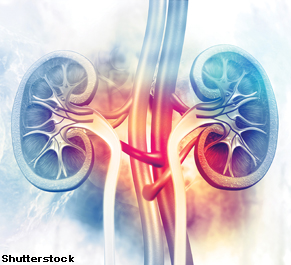 Thinking about more than B cells in lupus inflammation & pathogenesis
Thinking about more than B cells in lupus inflammation & pathogenesis
BARCELONA—With the excitement surrounding chimeric antigen receptor (CAR) T cell therapy as a potential treatment for systemic lupus erythematosus (SLE), one can be forgiven for forgetting about the other immune system cells involved in this disease.
At the EULAR 2025 session Not All About B Cells: Myeloid-Related Inflammation in Lupus Pathogenesis three speakers provided key insights into this important topic.
Skin Considerations
The session’s first speaker was J. Michelle Kahlenberg, MD, PhD, the Giles Boles and Dorothy Mulkey Research Professor of Rheumatology, vice chair of basic and translational research, Department of Internal Medicine, University of Michigan Medical School, Ann Arbor.
Dr. Kahlenberg began by noting that many of the conventional medications used in the treatment of SLE, such as methotrexate, mycophenolate mofetil and azathioprine, may help certain clinical domains, but often lack efficacy for cutaneous involvement. Anti-malarial medications, such as hydroxychloroquine, are often more helpful for cutaneous disease. Research from Zeidi et al. demonstrated that patients refractory to hydroxychloroquine show increased myeloid dendritic cell populations with higher tumor necrosis factor (TNF) α expression.1
Dr. Kahlenberg explained that active cutaneous disease in SLE is important because of its impact on quality of life and healthcare costs, as well as its direct link to systemic issues for patients. Skopelja-Gardner et al. showed that acute skin exposure to ultraviolet light can trigger a neutrophil-dependent injury response in the kidneys of patients with lupus. This response, which is characterized by upregulation of endothelial adhesion molecules and other markers associated with transient proteinuria, demonstrates a clear link between skin inflammation and kidney injury, with neutrophils serving as pathogenic mediators.2
Mitochondria
The session’s second speaker was Virginia Pascual, MD, director of the Drukier Institute for Children’s Health Research at Weill Cornell Medicine, New York. Dr. Pascual noted that SLE is an interferonopathy in which type I interferons—especially interferon-a—play a central and pathogenic role in the development and progression of the disease. Dr. Pascual connected this concept to an organelle rheumatologists may not routinely think about: mitochondria.
In healthy individuals, erythropoiesis involves the programmed removal of mitochondria from proerythroblasts via a hypoxia-inducible factor (HIF) mediated metabolic switch that activates the ubiquitin proteasome system and leads to the production of red blood cells free of mitochondria. Dr. Pascual and her colleagues found that, in a proportion of patients with SLE, this HIF-regulated process does not occur. Instead, an accumulation of mitochondria in red blood cells occurs. When these cells—termed Mito+ RBCs—are engulfed by macrophages, the result is activation of the cGAS/STING pathway, ultimately leading to the increased production of type I interferon.3
Dr. Pascual discussed these findings in a clinical context with respect to therapeutic trials in patients with SLE that, over the years, have often failed to meet primary end points. Many possible reasons exist for this failure (e.g., Outcome measures may not have captured clinically meaningful changes; high background immunosuppressive therapy may have masked the effects of the medication being studied.). She argued that one source of failure may be the molecular heterogeneity of SLE, as illustrated by her group’s work.
With the discovery of SLE granulocytes and erythroid cells as sources of interferon-genic mitochondrial nucleic acids, Dr. Pascual believes the rheumatology research community must incorporate the molecular stratification of patients with SLE into the design of future clinical trials. In doing so, researchers are more likely to see the appropriate grouping of patients and find the benefit of targeted therapies that take advantage of our understanding of disease pathogenesis at a minute level.
Lupus Nephritis

Dr. Fava
The final speaker in the session was Andrea Fava, MD, director of Lupus Translational Research, Johns Hopkins University School of Medicine, Baltimore. Dr. Fava began by reminding the audience of a few sobering facts about lupus nephritis:
- It occurs in up to half of patients with SLE;
- It is associated with significantly increased mortality compared with patients without lupus nephritis; and
- 10–30% of patients with lupus nephritis progress to renal failure and require dialysis.4
For these reasons, the Accelerating Medicines Partnership (AMP)—a collaborative effort between the U.S. National Institutes of Health, the U.S. Food & Drug Administration, multiple biopharmaceutical and life science companies, and nonprofit organizations seeking to transform the development of new diagnostics and treatments—considers lupus nephritis one of its key areas of interest. Dr. Fava’s work as part of AMP has been dedicated to urine proteomics, the large-scale analytical study of the proteins present in urine.
As Dr. Fava noted, urine routinely collects and contains byproducts of kidney inflammation in real-time. Thus, urine proteomics serves as a non-invasive method for discovering biomarkers that can be used to diagnose, monitor treatment response and understanding the pathophysiology of lupus nephritis.
Through this work, Dr. Fava and colleagues have found that urinary biomarkers of monocyte/neutrophil degranulation, macrophage activation, wound healing and matrix degradation, and interleukin (IL) 16 help characterize the aggressive proliferative forms of lupus nephritis and correlate well with histological activity on renal biopsies. Additionally, a decline in these biomarkers after three months of treatment can predict treatment response at one year better than measurements of proteinuria, the current gold standard in clinical practice.5
In another surprise that challenges the conventional approach to lupus nephritis, Dr. Fava and colleagues have discovered that granulocytes are abundant in the kidneys of patients with lupus nephritis, including in pure membranous disease (i.e., class V lupus nephritis in the ISN/RPS classification system). However, he cautioned attendees not to be fooled by the absence of these cells on the average renal biopsy. Unlike typical neutrophils, those cells seen in patients with lupus nephritis are mostly unilobate and may be missed by traditional histology because they appear to localize most to the tubulointerstitium and may also appear within areas of fibrosis.
In Sum
The lectures provided by all three speakers were captivating to an audience willing think beyond B cells. (Note: As an aside, Dr. Fava’s recent New England Journal of Medicine editorial titled, “To B or Not to B—the Role of B-Cell Depletion in Lupus Nephritis” is a must-read on this broader topic).6
For a disease as complex as lupus, it is important to consider the many parts of the immune system that may play a role.
Jason Liebowitz, MD, FACR, is an assistant professor of medicine in the Division of Rheumatology at Columbia University Vagelos College of Physicians and Surgeons, New York.
References
- Zeidi M, Kim HJ, Werth VP. Increased myeloid dendritic cells and TNF-α expression predicts poor response to hydroxychloroquine in cutaneous lupus erythematosus. J Invest Dermatol. 2019 Feb;139(2):324–332.
- Skopelja-Gardner S, Tai J, Sun X, et al. Acute skin exposure to ultraviolet light triggers neutrophil-mediated kidney inflammation. Proc Natl Acad Sci U S A. 2021 Jan 19;118(3):e2019097118.
- Caielli S, Cardenas J, de Jesus AA, et al. Erythroid mitochondrial retention triggers myeloid-dependent type I interferon in human SLE. Cell. 2021 Aug 19;184(17):4464–4479.e19.
- Parikh SV, Almaani S, Brodsky S, et al. Update on lupus nephritis: Core curriculum 2020. Am J Kidney Dis. 2020 Aug;76(2):265–281.
- Fava A, Buyon J, Magder L, et al. Urine proteomic signatures of histological class, activity, chronicity, and treatment response in lupus nephritis. JCI Insight. 2024 Jan 23;9(2):e172569.
- Fava A. To B or not to B—the role of B-cell depletion in lupus nephritis. N Engl J Med. 2025 Apr 17;392(15):1545–1547.



